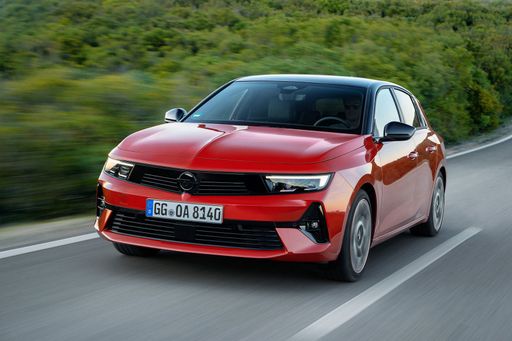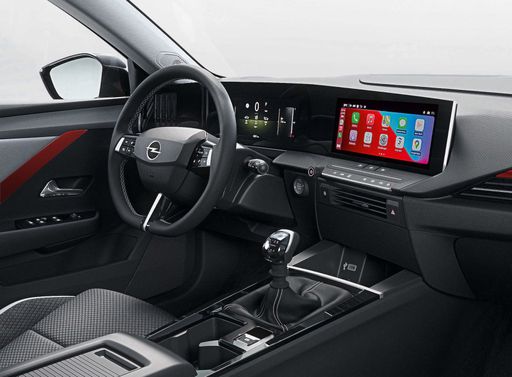Alfa Romeo Junior vs Vauxhall Astra – Which car suits you better?
Two cars, one duel: Alfa Romeo Junior meets Vauxhall Astra.
Which one wins in performance, efficiency and value for money? Find out now!
Costs and Efficiency:
Looking at overall running costs, both models reveal some interesting differences in everyday economy.
Vauxhall Astra has a slight advantage in terms of price – it starts at 25200 £, while the Alfa Romeo Junior costs 25700 £. That’s a price difference of around 480 £.
Fuel consumption also shows a difference: Vauxhall Astra manages with 2.20 L and is therefore significantly more efficient than the Alfa Romeo Junior with 4.80 L. The difference is about 2.60 L per 100 km.
In terms of energy consumption, the advantage goes to the Alfa Romeo Junior: with 15.10 kWh per 100 km, it’s barely noticeable more efficient than the Vauxhall Astra with 15.40 kWh. That’s a difference of about 0.30 kWh.
As for range, the Vauxhall Astra performs barely noticeable better – achieving up to 419 km, about 9 km more than the Alfa Romeo Junior.
Engine and Performance:
Under the bonnet, it becomes clear which model is tuned for sportiness and which one takes the lead when you hit the accelerator.
When it comes to engine power, the Alfa Romeo Junior has a to a small extent edge – offering 280 HP compared to 225 HP. That’s roughly 55 HP more horsepower.
In acceleration from 0 to 100 km/h, the Alfa Romeo Junior is distinct quicker – completing the sprint in 5.90 s, while the Vauxhall Astra takes 7.50 s. That’s about 1.60 s faster.
In terms of top speed, the Vauxhall Astra performs slightly better – reaching 235 km/h, while the Alfa Romeo Junior tops out at 206 km/h. The difference is around 29 km/h.
There’s also a difference in torque: Vauxhall Astra pulls hardly perceptible stronger with 360 Nm compared to 345 Nm. That’s about 15 Nm difference.
Space and Everyday Use:
Whether family car or daily driver – which one offers more room, flexibility and comfort?
Both vehicles offer seating for 5 people.
In curb weight, Vauxhall Astra is hardly perceptible lighter – 1341 kg compared to 1380 kg. The difference is around 39 kg.
In terms of boot space, the Vauxhall Astra offers barely noticeable more room – 422 L compared to 415 L. That’s a difference of about 7 L.
In maximum load capacity, the Vauxhall Astra performs minimal better – up to 1339 L, which is about 59 L more than the Alfa Romeo Junior.
When it comes to payload, Vauxhall Astra slightly takes the win – 509 kg compared to 420 kg. That’s a difference of about 89 kg.
Who wins the race?
The Vauxhall Astra proves to be dominates this comparison and therefore becomes our DriveDuel Champion!
Vauxhall Astra is the better all-rounder in this comparison.
 @ Opel / Stellantis Media
@ Opel / Stellantis Media
Vauxhall Astra
Alfa Romeo Junior
The Alfa Romeo Junior captures the essence of Italian design with its sleek lines and compact dimensions, making it an icon of elegance and performance. With a spirited driving experience and a charming retro aesthetic, it appeals to enthusiasts and casual drivers alike. This delightful car embodies the brand's rich heritage while remaining a fun and engaging option for those seeking a unique automotive experience.
details @ Alfa Romeo / Stellantis Media
@ Alfa Romeo / Stellantis Media
 @ Alfa Romeo / Stellantis Media
@ Alfa Romeo / Stellantis Media
 @ Alfa Romeo / Stellantis Media
@ Alfa Romeo / Stellantis Media
Vauxhall Astra
The Opel Astra exudes a sleek and modern design, making it a standout choice in the compact car segment. Its interior is thoughtfully crafted, providing both comfort and cutting-edge technology for an enhanced driving experience. The vehicle is also celebrated for its efficient performance, adeptly balancing power with fuel economy to suit urban and long-distance journeys alike.
details @ Opel / Stellantis Media
@ Opel / Stellantis Media
 @ Opel / Stellantis Media
@ Opel / Stellantis Media
 @ Opel / Stellantis Media
@ Opel / Stellantis Media
 @ Alfa Romeo / Stellantis Media
@ Alfa Romeo / Stellantis Media
|
 @ Opel / Stellantis Media
@ Opel / Stellantis Media
|
|
|
|
Costs and Consumption |
|
|---|---|
|
Price
25700 - 41600 £
|
Price
25200 - 40500 £
|
|
Consumption L/100km
4.8 - 5.4 L
|
Consumption L/100km
2.2 - 6 L
|
|
Consumption kWh/100km
15.1 - 17.5 kWh
|
Consumption kWh/100km
15.40 kWh
|
|
Electric Range
344 - 410 km
|
Electric Range
82 - 419 km
|
|
Battery Capacity
0.4 - 51 kWh
|
Battery Capacity
51 kWh
|
|
co2
0 - 119 g/km
|
co2
0 - 135 g/km
|
|
Fuel tank capacity
44 - 45 L
|
Fuel tank capacity
42 - 52 L
|
Dimensions and Body |
|
|---|---|
|
Body Type
SUV
|
Body Type
Hatchback
|
|
Seats
5
|
Seats
5
|
|
Doors
5
|
Doors
5
|
|
Curb weight
1380 - 1689 kg
|
Curb weight
1341 - 1736 kg
|
|
Trunk capacity
340 - 415 L
|
Trunk capacity
352 - 422 L
|
|
Length
4173 mm
|
Length
4374 mm
|
|
Width
1781 mm
|
Width
1860 mm
|
|
Height
1505 - 1538 mm
|
Height
1432 - 1488 mm
|
|
Max trunk capacity
1205 - 1280 L
|
Max trunk capacity
1268 - 1339 L
|
|
Payload
390 - 420 kg
|
Payload
414 - 509 kg
|
Engine and Performance |
|
|---|---|
|
Engine Type
Electric, Petrol MHEV
|
Engine Type
Petrol, Diesel, Electric, Petrol MHEV, Plugin Hybrid
|
|
Transmission
Automatic
|
Transmission
Manuel, Automatic
|
|
Transmission Detail
Dual-Clutch Automatic, Reduction Gearbox
|
Transmission Detail
Manual Gearbox, Automatic Gearbox, Reduction Gearbox, Dual-Clutch Automatic
|
|
Drive Type
Front-Wheel Drive, All-Wheel Drive
|
Drive Type
Front-Wheel Drive
|
|
Power HP
136 - 280 HP
|
Power HP
130 - 225 HP
|
|
Acceleration 0-100km/h
5.9 - 9.1 s
|
Acceleration 0-100km/h
7.5 - 10.6 s
|
|
Max Speed
150 - 206 km/h
|
Max Speed
170 - 235 km/h
|
|
Torque
230 - 345 Nm
|
Torque
230 - 360 Nm
|
|
Number of Cylinders
3
|
Number of Cylinders
3 - 4
|
|
Power kW
100 - 207 kW
|
Power kW
96 - 165 kW
|
|
Engine capacity
1199 cm3
|
Engine capacity
1199 - 1598 cm3
|
General |
|
|---|---|
|
Model Year
2024 - 2025
|
Model Year
2023 - 2025
|
|
CO2 Efficiency Class
A, C, D
|
CO2 Efficiency Class
D, A, C, B
|
|
Brand
Alfa Romeo
|
Brand
Vauxhall
|
What drive types are available for the Alfa Romeo Junior?
Available configurations include Front-Wheel Drive or All-Wheel Drive.
The prices and data displayed are estimates based on German list prices and may vary by country. This information is not legally binding.
